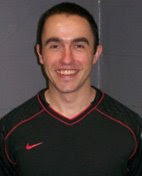Having trouble getting out of bed? Having to walk backwards down the stairs because your legs feel as though they are on fire? You are probably suffering from DOMS. Don't worry. It's not as bad as it feels and if you follow the recommendations of DJ Szyman-ski at Auburn University you may be able to avoid the associated pain altogether ('Recommendations for the avoidance of Delayed Onset Muscular Soreness,' Strength and Conditioning Journal, Vol 23 (4) 7-13).
Every athlete, regardless of his or her fitness level, has experienced sore and stiff muscles after moderate to strenuous exercise at the start of a new training programme. These symptoms usually occur after eccentric (downhill running, plyometrics, etc.) or unaccustomed exercise. During these activities your muscles become more susceptible to structural damage, resulting in muscle soreness, loss of strength, decreased range of motion and neuromuscular function. All of these symptoms together are generally referred to as DOMS (delayed onset muscle soreness).
Delayed onset muscle soreness (DOMS) is not a new phenomenon; research investigating the cause of delayed onset muscle soreness (DOMS) dates back to the early 1900s and several theories have been put forward to explain the underlying cause. Probably one of the most popular explanations is the accumulation of lactic acid in the muscles. Popular yes, correct, no. Blood and muscle lactate levels typically return to normal values after 30-60 minutes of recovery. Eccentric exercise produces the most severe muscle soreness but requires relatively low energy expenditure (even less than needed for concentric exercise). Therefore if lactic acid were to cause delayed onset muscle soreness (DOMS), then muscle soreness would be expected to be greater after exercise with a higher metabolic cost (concentric activity). In addition, we know from bitter experience that the pain associated with delayed onset muscle soreness (DOMS) peaks after 24-72 hours. When we consider that lactate concentrations return to pre-exercise levels within 60 minutes it seem ludicrous to suggest that the two are somehow related.
Subsequent research has suggested that damage to the muscle ultra structure and connective tissue may be responsible for delayed onset muscle soreness (DOMS). It is suggested that a sequence of events starting with exercise causes muscle damage and then muscle protein breakdown, resulting in cell inflammation and increased local muscle temperature. As a result pain receptors are activated, causing the sensation of delayed onset muscle soreness (DOMS). Further research suggests that muscle damage alone may not be the best explanation for the cause of delayed onset muscle soreness (DOMS). Inflammation and swelling should also be considered as they also activate and sensitise pain sensors around the muscle fibres.
So what does Szymanski recommend?With a better understanding of the underlying causes of delayed onset muscle soreness (DOMS) it is possible to implement preventative strategies. Szymanski offers the following guidelines to follow when attempting to reduce delayed onset muscle soreness (DOMS).
1.Don't bother to reach for the medicine cabinet prior to a match or workout. No research supports the use if anti-inflammatory drugs, antioxidant supplements, ointments or creams in the prevention of delayed onset muscle soreness (DOMS).
2. Conflicting evidence surrounds the use if post-exercise massage, post-exercise stretching and cold application.
3. Warm up: research indicates that concentric activity may better prepare the body for the stress caused by eccentric, damage- inducing exercise. Increased muscle temperature results in a reduction in muscle or connective tissue viscosity, a higher resistance of muscle tissue to tearing and increased muscle elasticity.
4. In addition to a warm up,repeated bouts of eccentric exercise performed within one to six weeks after the initial bout of exercise have been shown to reduce delayed onset muscle soreness (DOMS) and muscle damage allowing for faster recovery of strength and ROM.What action to takeTherefore to avoid delayed onset muscle soreness (DOMS), try the following:(a) Perform a general warm up(5 mins, cycling, jogging etc).(b) Perform specific dynamic mobility exercises for 15-20 minutes.(c) When starting an exercise programme, avoid movements that entail strenuous eccentric muscle action (downhill running, plyometrics, etc).(d) Gradually increase the intensity and duration of exercise.(e) Complete additional bouts of the exercise that originally caused delayed onset muscle soreness (DOMS) - for instance, if DOMS was sustained during downhill running, additional downhill running within one to six weeks will help alleviate the problem).
Tuesday, 13 May 2008
Subscribe to:
Post Comments (Atom)




No comments:
Post a Comment